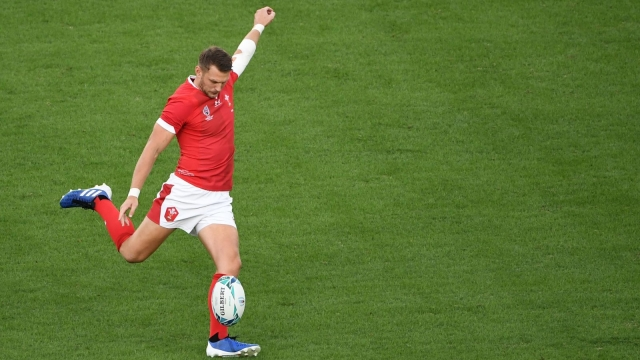Like all other professional sports, the winner and loser in the game of rugby are determined by the number of points scored. Points are primarily earned through a try which accounts for five points and the ensuing conversion which accounts for two points. The latter is often the difference between sweet victory and agonizing defeat, especially in close fixtures, which most top-tier rugby matches tend to be. Several types of kicks are allowed in Rugby Union, the only difference is when they are allowed, when they can be employed, and their effectiveness or lack thereof. Among them is the often-under-utilized drop goal.
Are drop goals allowed in Rugby Union? Yes. Drop goals, which are also known as dropped goals or pots are indeed allowed in Rugby Union. They are one of the options employed by players in open play as alternatives to try in situations where an opportunity presents itself or where attempting to advance may result in loss of possession. Drop goals are worth three points.

What Is a Drop Goal in Rugby Union?
A drop goal in rugby union occurs when a player kicks for goal during open play or while play continues. It is called a drop goal because a player drops the ball on the ground before kicking it on its first bounce or on the half volley.
When taken successfully, drop goals usually earn a team three points. Traditionally, most rugby union teams had a designated player (fly-half) who normally took their kicks including drop-goal attempts. Teams have however deviated from the former practice and quite a number now have more than one player who is capable of taking kicks.
Such players normally undergo specialized training aimed at ensuring that they do take kicks effectively under pressure as most game situations are likely to be such. A number of players have made careers and even out of being stellar kickers.
Examples include former English ace Jonny Wilkinson who leads the pack with 36 made drop goals. Fellow countryman Rob Andrew and ex-Argentina fly-half round off the top three with 23 and 28 drop goals respectively. The record for the longest made drop goal belongs to former South Africa standout Gerald Hamilton, who kicked the ball over a distance of 77.7 meters in a clash against England in January 1902.
According to rugby union rules, opposing players are allowed to intercept or otherwise stifle a drop goal attempt by either blocking the kick or tackling the play who may be looking to attempt the drop goal since it occurs during open play and not while play is temporarily paused after an opposing team commits an infraction.
Why Is a Drop Goal Not a Knock On?
A drop goal is not a knock-on since in the former, the ball goes straight down and bounces off the ground before being kicked whereas a knock-on mostly occurs when a player from the team with possession of the ball knocks the ball forward as they attempt to catch it.
The two also occur in two different situations in a rugby match. A drop goal is often taken when a player from an opposing team opts to kick the ball through the goalposts as opposed to a knock-on which likely occurs as a team attempts to advance the ball with the aim of scoring a try.
Put differently, for a player to attempt a drop goal during open play, it would most likely have had to have been a better option than trying to risk losing possession of the ball by advancing it. A good example is when a team punts a ball into their opposing team’s half and quickly advances.

If executed well, the opposing team would have very little time to catch the ball and attempt to advance it. Players from the team would also have to contend with the advancing players who would have a considerably shorter distance to cover to the try line.
A drop goal attempt would therefore be a better alternative, especially if the player who initially catches the ball is a good kicker who can successfully cover the distance to their rival’s goalposts. The logic behind it is simple: it would be much easier to go over the advancing opponents than to go through them.
Why Aren’t There More Drop Goals in Rugby?
The past few years have seen a reduction in the number of drop goal attempts as opposed to previous years. Drop goals now appear to be used as a last resort to win a closely contested match or one where the scores are tied down to the wire instead of as a go-to offensive move.
A lot of it has to do with the fact that a try is now worth a maximum of seven points (five for the try and two for the conversion that follows) whereas a drop goal is worth only three. During the early days of the sport in the late 1800s, a try was only worth one point, a conversion two points and a drop goal or a goal from a mark were worth three.
The advancing team’s reputation and/or pride also factor in since they would most likely attempt a drop goal if they don’t have any luck establishing a position inside their opponent’s 22. In such instances, such a team would view a drop goal attempt as a sign of weakness while their opponents would see the same as an implied admission of defeat. Rugby is as much a psychological game as it is a physical one and no team would want to give their opponents any advantage.
Can You Score a Drop Goal from Kick-Off?
No, you cannot score a drop goal from kick-off as drop goals can only be scored during open play. A drop goal should not be confused with a drop kick which is used to start a half from the center spot (kick-off). A drop goal does however start off as a drop kick and only becomes a drop goal once it is directed to crosses between the two goalposts.
A drop kick is also used to restart play after points have been scored by either team. It is also used to restart play from the 22-meter line when a player from a defending team touches the ball down in his own in-goal area as a defensive measure to stifle an attacking team’s kick or advance into their in-goal area.
